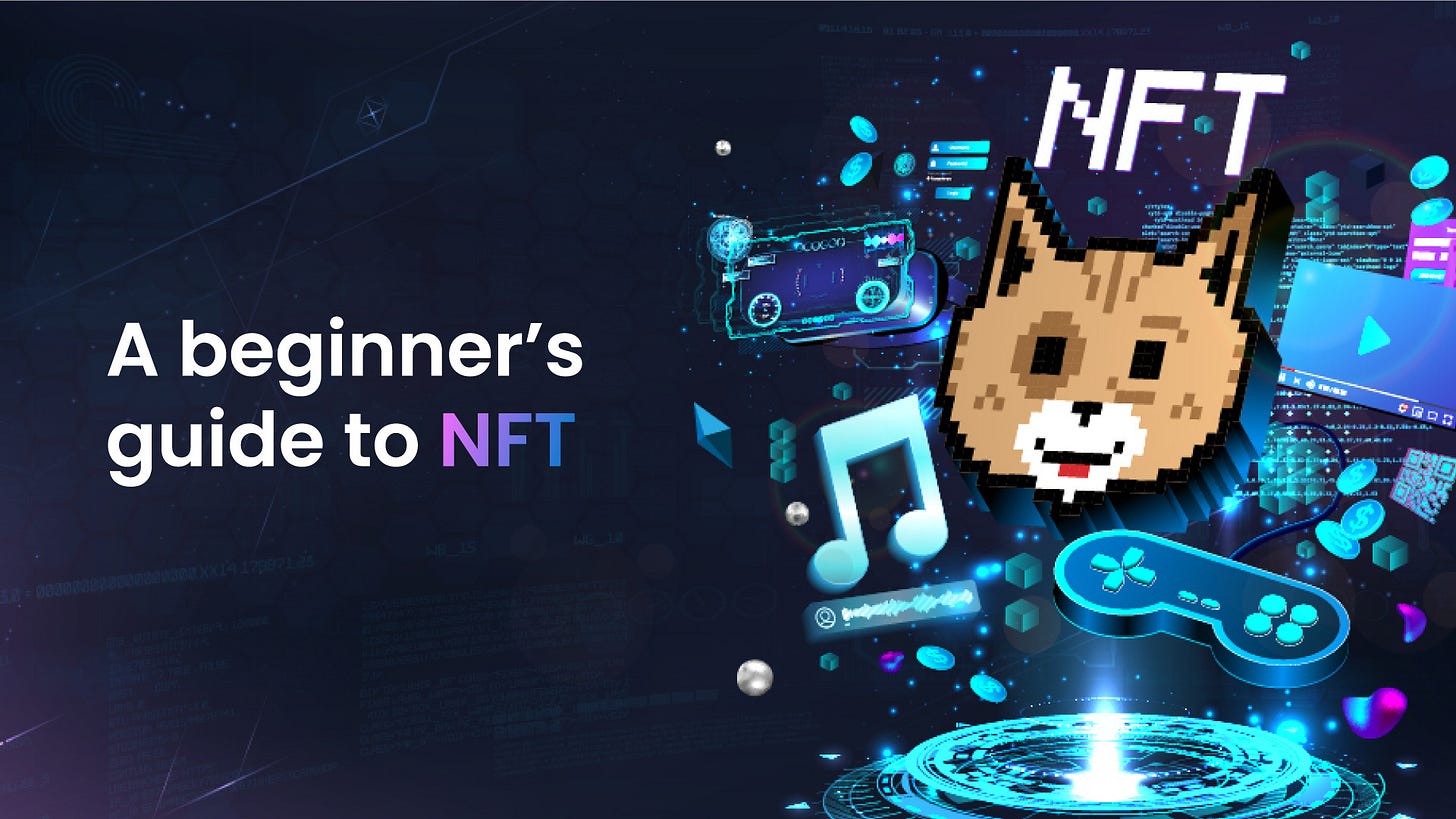A Beginner's Guide to NFT
We all have been hearing about NFT artwork selling for thousands of dollars and may have been curious about what exactly this is! Don't worry! You are one of those millions of people hearing about the strong buzz NFT is creating across the globe. NFT has been in the limelight for some years but gained this massive popularity within the last two years. The term NFT is often confusing as people may mistake them for cryptocurrencies, utility tokens, and service tokens. From fortune 500 companies to celebrities, everybody is now behind the NFT boom. If you are someone who closely follows these trends and is looking to know more about NFT, you must go on reading.
What are NFTs?
If you ask for the most rapidly growing sector in the crypto industry, that would be NFT. The word NFT stands for a non-fungible token, whereas 'Non-Fungible' means unique, which cannot be replaced. They are digital assets that contain identifying data recorded in smart contracts. Precisely they are digital collectibles that can include images, music, characters, or anything that is stored on the blockchain and can be sold or traded. You can be awarded a digital certificate of ownership for any physical or digital collectible.
What makes NFTs so special?
NFTs have unique attributes compared to fungible assets, as they are usually linked to a specific asset. Holding an NFT proves the ownership of digital assets, which are nonidentical and don't have the exact attributes. Every individual NFT token has a unique identifier and metadata about the item to which they are attached. Currently, every digital asset can be replicated, reducing its authenticity, whereas, in the case of NFT, that's close to impossible. Creating NFT can help businesses make their digital assets unique, opening up new business possibilities. What could be the other benefits of creating an NFT? Let's analyze.
Increased marketplace efficiency
NFT provides the superpower for artists to communicate with their potential audiences directly, making the markets more efficient. While converting the physical assets, you can easily avoid third-party mediators, provide more security and enhance the supply chains. While considering the long term, it reduces expenses and makes transactions simpler.
Authenticity
Every NFT the creator makes will have a unique identity, which cannot be replicated. They are created in blockchain, which has a unique record with immunity against replacement and modifications. Creators have the privilege of introducing a limited number of NFTs to have a scarcity of the same.
Secure
Every NFT is created with blockchain technology, which has a record of authenticity and chain of ownership, making them secure. The network tracks and verifies the tokens, making them impossible to replicate.
Smart contracts are used in NFTs to detail limitations on the circulation of these virtual assets and develop trust between parties involved in the trade of NFTs.
Transferability
The transferring of NFT between users can be done easily and quickly, which is done through the help of smart contracts. The transfer is completed as the buyer and seller agree on smart contracts' terms and conditions.
How do NFTs work?
The right of ownership of NFT is fixed in blockchain, making it more secure. The owner of an NFT can manage it with a unique ID which makes it your exclusive asset. Mostly NFTs are sold through dedicated marketplaces, where the owners can display their digital assets and buyers can purchase them. The buyers can buy the NFTs using cryptocurrencies, where the artist has the right to decide the price. When the buyer purchases the assets, the certificate of ownership transfers to them, which they can trade or keep to themselves in the future.
Who can create an NFT?
NFT is now creating a positive boom for content creators as they can sell these digital assets and reach the global market effortlessly. Nowadays, you can access NFT platforms that offer cutting-edge tools to help you create NFTs of your own. Regardless of being a musician, artist, company, investor, or collector, you can create your personalized NFT by using the minting tools available on NFT marketplaces.
What does it mean to mint an NFT?
Minting an NFT involves converting digital data into crypto collections or digital assets registered on the blockchain. The entire minting process needs access to the crypto blockchain and an NFT marketplace. Once you mint a digital asset, your NFT can keep it in the marketplace to sell, which can be later sold via a smart contract. Based on your familiarity with crypto platforms, you may take less than an hour or even more to mint an NFT.
What are NFT Marketplaces?
To create and sell NFT, you need a dedicated platform. NFT marketplaces work as a public Blockchain platform where you can purchase, trade or mint NFT. Popular NFT marketplaces like OpenSea, Rarible, and Mintable, run on the Ethereum blockchain. The current generation of marketplaces is made so that they can be used by anyone, regardless of technical skill.
You will have to open a digital wallet, as you will have to pay in cryptocurrency to start creating your NFT. When it comes to purchasing or trading, a crypto wallet is essential, and for which you can use reputable wallets, including MetaMask, Coinbase Wallet, and Alpha Wallet. Major NFT marketplaces do not charge to mint NFTs; however, they charge a service fee when you list the NFT in the marketplace.
Bottom Line
If you are a beginner looking forward to knowing more about NFT, the article may have helped you understand the basics. More and more brands and businesses are willing to spend on NFT, which is a good sign for NFT enthusiasts. Before investing in NFT, you must conduct a thorough ground study and seek expert opinions. Start investing; NFT is here to stay!

